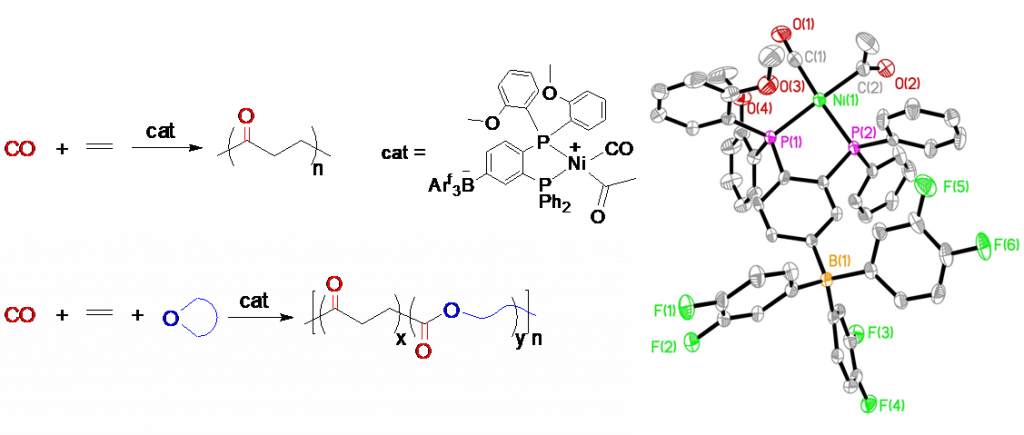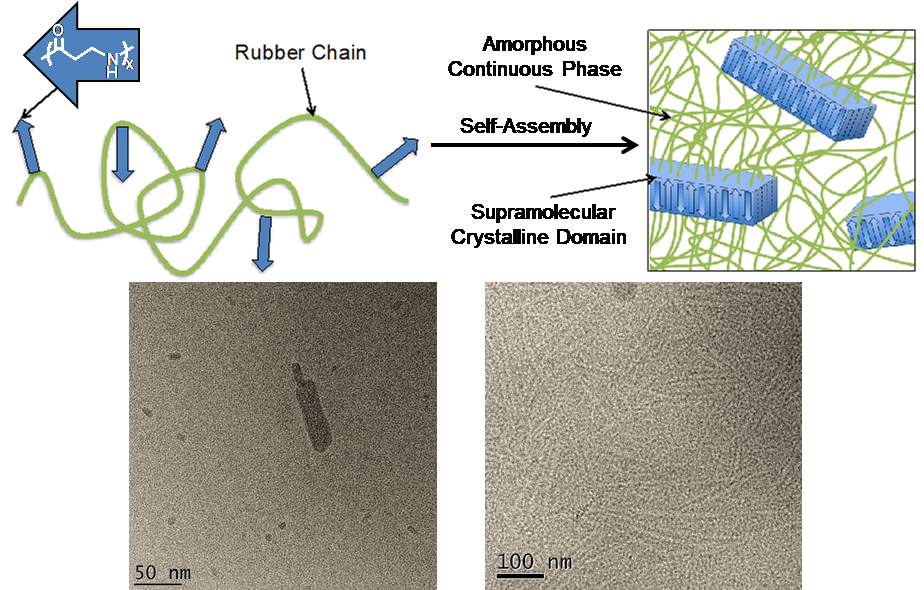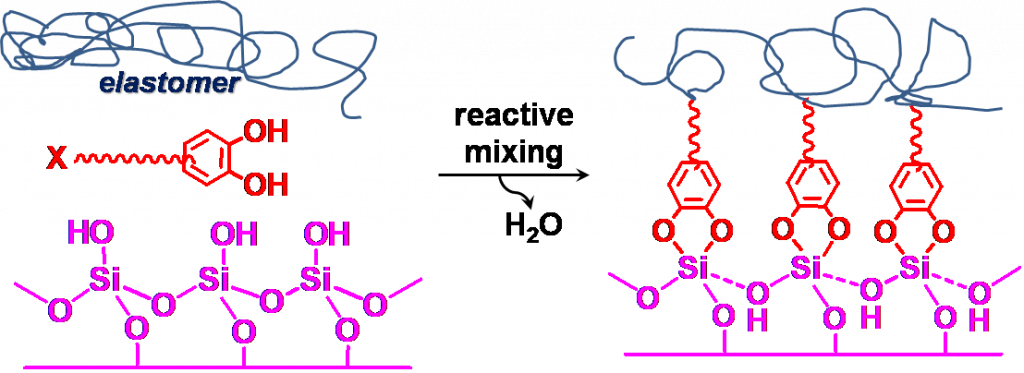Catalysis

Catalytic carbonylative polymerizations (COPs) such as the ones shown above constitute a versatile platform for synthesis of a variety of polymers that have a wide range of potential applications. The polyketone and poly(ketone-co-ester) are particularly fascinating as environmentally sustainable replacements of polyethylene (PE) and polypropylene (PP). A lofty goal indeed, but we deem it realistic for the following reasons. First, CO as an industrial-scale commodity chemical is cheaper than ethylene and propylene, making it economically viable to replace PE and PP with polymers produced from CO and ethylene as the major comonomers. Second, CO is readily obtained from CO2, and ethylene can be obtained from bioethanol, rendering low carbon footprints to the CO- and ethylene-based polymers. Third, pyrolysis of the ketone and ester functionalities can occur at relatively low temperatures, making chemical recycling of the poly(ketone-co-ester) possible. Finally, the ketone functionality is photolytically degradable, and the ester functionality is hydrolytically degradable, making the poly(ketone-co-ester)s degradable in a variety of environments on the surface of the Earth in case that they inadvertently escape from good waste-management practices.
Catalyst design and development involving synthetic and mechanistic organometallic chemistry is at the center of the project. Following our investigations on Co catalysts (Chem. Commun. 2001, 1436-1437 and J. Am. Chem. Soc. 2004, 126, 14716-14717), we currently focus on zwitterionic Ni (Angew. Chem., Int. Ed. 2018, 130, 14111-14115) and Fe catalysts and strive to expand the scope of COPs. Study of the mechanical properties of the polymer products is an integral part of the project. In addition, we are developing mild and selective pyrolysis for chemically recycling the polyketones and poly(ketone-co-ester)s.
Elastomers
We work in several directions under the general umbrella of chemistry and processing technology of elastomers. All projects in this area involve chemical synthesis and characterization, processing of elastomers, and study of mechanical and dynamic mechanical properties of the elastomers. A couple of examples are given below.
Supramolecular reinforcement of elastomers

Monodisperse oligo(b-alanine)s chemically tethered to elastomers form b-sheet crystals in the continuous phase of hydrocarbon elastomers. The morphology of the crystals can be tailored from nanoparticles with all three dimensions < 100 nm to nanofibers with the longest dimension reaching micrometers (Macromolecules 2016, 49,2688-2697). The precisely controlled hierarchical structure of the nanocrystal offers an opportunity to control the dynamic mechanical properties of the elastomers. Understanding the mechanisms of energy dissipation and the temporal and spatial dependence of the dissipative events are key. In addition, we are attempting to apply the strategy of supramolecular reinforcement to making safer, more durable, and more fuel-efficient tires (RUBBER. CHEM. TECHNOL. 2019, 92, 198-217).
Catechol-based coupling agents

Precipitated silica fillers provide improved fuel efficiency and wet traction without sacrificing the durability of passenger tires in comparison to carbon black. Silane coupling agents are currently used to couple the silica and rubber. We have demonstrated that catechol-based coupling agents can replace the silane coupling agents and eliminate the volatile organic compound (VOC) generated during the mixing process (Polymer 2017, 125, 172-181 and J. Appl. Polym. Sci. 2018, 135, DOI: 10.1002/APP.45937). We are currently developing new catechol-based coupling agents that out-perform the silane coupling agents, particularly by affording satisfactory coupling between natural rubber and silica.